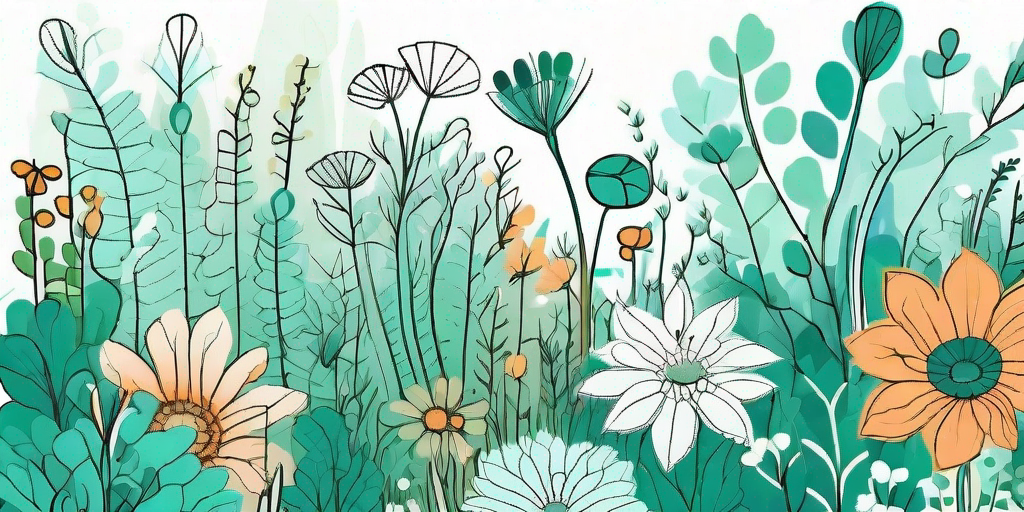
If you're a green thumb looking for a new gardening trick, or a novice gardener hoping to get your plants to stop giving you the stink eye, you've come to the right place. Welcome to the wonderful world of companion planting, where flowers and veggies live together in perfect harmony, helping each other grow and keeping pests at bay. It's like a plant version of a buddy cop movie, but with less car chases and more photosynthesis.
The Magic of Companion Planting
Companion planting is the horticultural equivalent of a good wingman. It's all about pairing plants that can help each other out. Some plants might deter pests that would otherwise munch on their neighbors, while others might improve the soil for their plant pals. It's a beautiful system of give and take, like borrowing a cup of sugar from your neighbor, only to return it later with a freshly baked pie.
But it's not just about pest control and soil improvement. Companion planting can also help with pollination, provide habitat for beneficial creatures, maximize the use of space, and increase crop productivity. It's like having a garden party where everyone brings something to the table. And who doesn't love a good party?
Companion Planting: A History
Companion planting isn't some newfangled trend. It's been around for centuries, used by indigenous peoples around the world. The most famous example is the "Three Sisters" method used by Native American tribes, which involves planting corn, beans, and squash together. Each plant helps the others in some way, creating a symbiotic trifecta of vegetable goodness.
So, if you're feeling a little adventurous, why not give companion planting a try? Your garden will thank you, and you might just find yourself with a bumper crop of veggies and flowers.
How to Get Started with Companion Planting
Now that we've piqued your interest, let's get down to the nitty-gritty of how to actually do this companion planting thing. Don't worry, we're not going to leave you high and dry. We've got a step-by-step guide to get you started.
First things first, you need to know your plants. Not all plants play nice together. Some might compete for resources, while others might attract pests that harm their neighbors. It's like trying to set up your friend with someone they have absolutely nothing in common with. It's just not going to work out.
Step 1: Do Your Research
Before you start planting willy-nilly, take some time to research which plants make good companions. There are plenty of resources out there to help you out, from books to online guides.
Remember, the goal here is to create a harmonious garden where every plant is happy and healthy. So, do your homework and make sure you're setting up your plants for success.
Step 2: Plan Your Garden
Once you've got a good idea of which plants are BFFs, it's time to plan your garden. This is where things get fun. You can start to visualize how your garden will look, and where each plant will go.
Keep in mind that some plants need more sun than others, and some need more space. It's like planning a seating chart for a wedding. You want to make sure everyone's comfortable and has a good time.
Step 3: Get Planting
Now comes the fun part: getting your hands dirty. Plant your companions together, and watch as they help each other grow.
Remember to take care of your garden, watering and weeding as necessary. Your plants are doing their part to help each other out, so make sure you do yours too.
Companion Planting Pairings to Try
Ready to dive in but not sure where to start? Here are a few companion planting pairings to get you started.
- Tomatoes and Basil: These two are like peas in a pod. Basil helps to repel pests that love to munch on tomatoes, and some gardeners swear that it even improves the flavor of the tomatoes.
- Carrots and Rosemary: Rosemary can help to deter carrot flies, keeping your carrots safe and sound.
- Beans and Corn: Beans can help to fix nitrogen in the soil, which corn loves. Plus, the corn provides a natural trellis for the beans to climb.
These are just a few examples. The possibilities are endless, so feel free to get creative with your pairings.
FAQs
Can I use companion planting in a small garden?
Absolutely! Companion planting is a great way to maximize space in a small garden. By planting companions that help each other grow, you can get more out of your garden, no matter its size.
Can companion planting help with pest control?
Yes, many plants can deter pests that would otherwise harm their neighbors. For example, marigolds are known to repel a variety of garden pests.
Can I use companion planting with flowers?
Definitely! Many flowers make excellent companions for veggies and other plants. Plus, they add a splash of color to your garden.
Conclusion
So there you have it, folks. The magic of companion planting, laid bare for all to see. It's a simple, natural way to improve your garden, whether you're a seasoned gardener or a complete newbie.
So why not give it a try? Your garden will thank you, and you'll get the satisfaction of knowing you're helping your plants live their best lives. Now that's what we call flower power.















